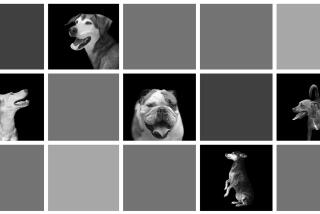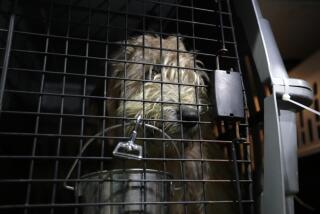San Diego Humane Society urged to stop releasing adoptable cats back to streets
SAN DIEGO — An attorney has sent a cease-and-desist letter to the San Diego Humane Society, demanding that the organization stop abandoning adoptable cats.
In a letter to San Diego Humane Society President Gary Weitzman dated Dec. 8, attorney Bryan Pease said he represents the Animal Protection and Rescue League and the Paw Protectors Rescue. The two organizations insist in the letter that the Humane Society “immediately cease from releasing friendly, adoptable cats back to the street and that any and all plans to start releasing friendly, adoptable cats be canceled.”
The letter says that if Weitzman does not confirm by Dec. 22 that the organization has stopped such releases, legal action will be necessary.
In recent years, the San Diego Humane Society has taken over animal-control responsibilities for the city of San Diego and other cities that were served by the county.
At issue is a pilot program called “shelter neuter return,” or SNR, in which cats brought into the Humane Society shelter from outdoors are spayed or neutered, vaccinated and returned to the streets, where life for homeless felines tends to be difficult and short, animal advocates say. Humane Society officials say the strategy is an alternative to euthanizing cats that cannot be adopted.
The new practice is controversial, with some animal welfare advocates endorsing it, and others describing it as cruel abandonment.
According to the letter, San Diego Humane Society records showed that 1,574 cats were brought into shelters in the second half of 2019. In that period, 718 cats that came in with “stray” status were listed as “return to habitat.”
Records for 75 cats whose outcome was listed as “return to habitat” show that 30% “were brought to the shelter in a cat carrier and/or had behavior notes indicating that they were friendly and able to be handled and petted,” the letter said.
In the letter, Pease’s clients said the Humane Society’s strategy is “to release friendly adoptable cats in the same way they would release a feral cat, and that is not only against the law, but not in the best interest of a social, adoptable cat.”
Weitzman said in a statement Wednesday that the Humane Society is encouraged by the results of its SNR program last year and intends to move forward with it.
“We will be officially launching this program in the next few months and are confident it will lead to the best outcomes for community cats,” Weitzman said.
He said the cease-and-desist letter did “not accurately reflect San Diego Humane Society’s commitment to providing the best and most humane outcome for every animal in our community, as has been our mission for over 140 years.”
The San Diego Humane Society is among many shelters that have been using SNR as an alternative to euthanasia, rather than committing the resources to finding homes for the cats, Pease said.
“There’s been a coordinated effort to get different animal-control agencies and humane societies to implement this program, which seems to be tied to the no-kill movement,” Pease said.
“No-kill on the surface of it sounds great, but it turns into anything you can do to keep the kill numbers down, and in this case that means dumping friendly, domesticated cats is a ‘success.’”
Records provided by Pease show that Humane Society workers released friendly cats back to the streets, sometimes surprising those who had brought the cats in for adoption.
For example, on Sept. 15, 2019, a man brought in a cat that had been seen around his neighborhood. According to the records, intake workers said the cat “did well with handling and treatments” and was “easy to remove from the carrier.”
The next day, workers contacted the man. He was confused about why the shelter, which he expected to care for the cat and find it a home, was asking him to return the cat to the street to be a “community cat,” according to the records.
The Humane Society worker explained the SNR strategy and suggested that someone was possibly caring for the cat, because it was thriving outside. The man who dropped off the cat said he would pick it up and try to get it adopted.
In the letter, Peace’s clients said, “Just because a cat looks healthy on the day it was brought in does not mean that it will not be attacked by a predator or hit by a car the next day, or starve in a month because no one is caring for it because it has been abandoned.”
In another case, a woman who, records say, dropped off a cat was upset to be told three days later to return it to the street. The record includes an intake worker’s note describing the cat as “friendly.”
According to the worker’s notes, the woman “was upset, saying, ‘I can’t believe you did not give them time to be adopted.’ I explained that our team determined them to be community cats and that they would thrive better in the community they are familiar with than in an enclosed space like a home. She said, ‘They aren’t feral or community cats! They were starving!’”
Weitzman said the San Diego Humane Society, “along with progressive shelters around the country,” are trying to evolve, based on research that shelters need to change to best meet the needs of unowned cats.
“With a minimum of 300,000 community cats estimated in our county, it is critical that our programs evolve to better care for these cats and ensure the best outcome for each and every one of them,” Weitzman said.
Morgan writes for the San Diego Union-Tribune.
More to Read
Sign up for Essential California
The most important California stories and recommendations in your inbox every morning.
You may occasionally receive promotional content from the Los Angeles Times.











